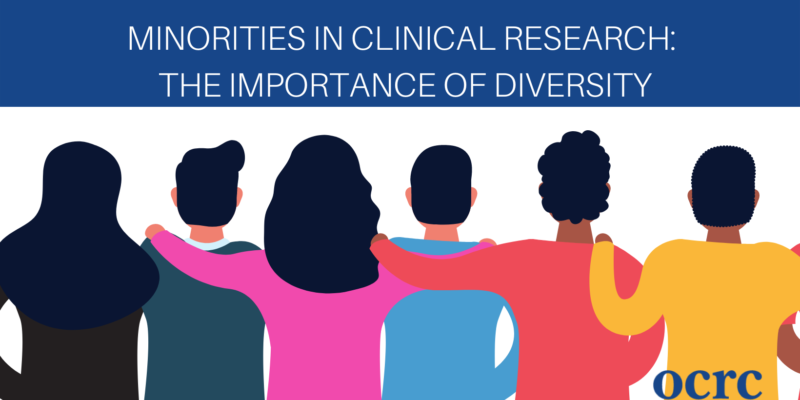
Modern medicine would not exist as it does today without clinical trials and clinical trials would be scientifically invalid without volunteers. At the heart of every study is data relating to the participants’ unique responses to investigational medications (keeping the placebo in mind, of course). Through this process, researchers develop and improve treatments that eventually make their way into the hands of the general public. Particularly in the case of the United States, this results in a medication consumed by a highly diverse range of individuals.
The ideal clinical trial consists of a range of participants: those with a diagnosis, those who are healthy, those who are receiving the treatment and those who receive a placebo. All clinical trials have specific inclusion and exclusion criteria, including but not limited to age, sex, diagnosis, location, and medical history. The wider the range of participants, the wider the collection of data throughout the trial. This also applies to race and ethnicity of clinical trial participants. After all, the purpose of a study sample is to represent the population as a whole.
Inclusion of all races and ethnicities isn’t just a social issue—it’s a medical issue. Studies show that some diseases and medications affect various populations differently. For example, African American patients metabolize certain enzymes differently, so some blood thinners are less effective at preventing blood clots for that specific population. Additionally, the asthma medication albuterol has proven to be less effective for African American and Puerto Rican children than for European American children.
According to Lilly.com, a clinical trial can be qualified as “diverse” when more than 25 percent of the sample population is not Caucasian. However, minorities rarely see proportionate representation in U.S. clinical research. While African Americans represent 13.4 percent of the country’s population, the FDA only reports 5 percent of those populations within clinical trials; while Hispanic or Latino populations make up 18.1 percent of the population, they only make up about one percent of clinical trial participants. Asian Americans, who make up six percent of the U.S. population, are represented in less than two percent of clinical trials. In nearly two-thirds of clinical trials, Native Americans aren’t reported at all.
So, what’s the reason for the lack of participation among minorities? Lack of awareness is definitely a common barrier, as well as lacking recruiting efforts for participation. Misconceptions about study risks can also hold potential volunteers back from participation. According to Research Head Dr. Kashif Ali at Maryland Oncology Hematology, minorities often miss out on clinical trials because of financial hurdles, logistical challenges and, well, overall distrust of the medical community.
FDA-approved medications and treatments will be prescribed to patients regardless of their race or ethnicity. Thus, it is crucial clinical trial findings are representative of the population as a whole.
If you would like to know more about participating in clinical research, check out our recent post about How to Find Clinical Trials in Your Area. You can also contact us to inquire about current research volunteer opportunities.
